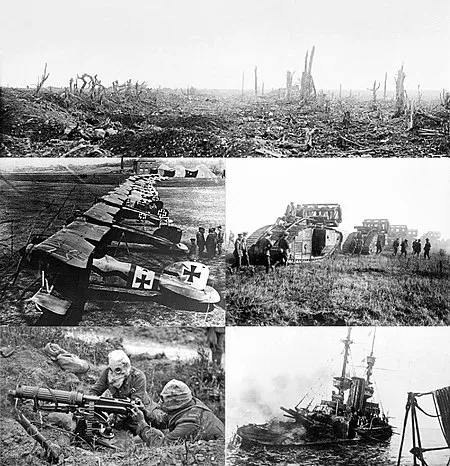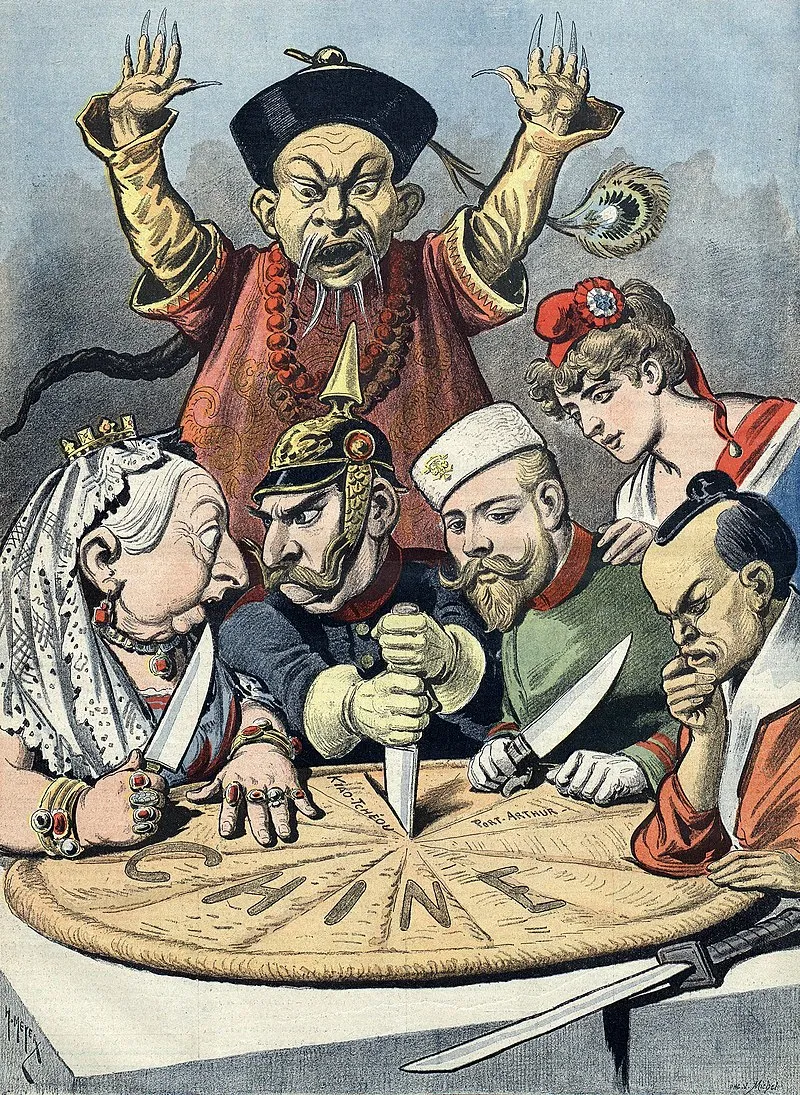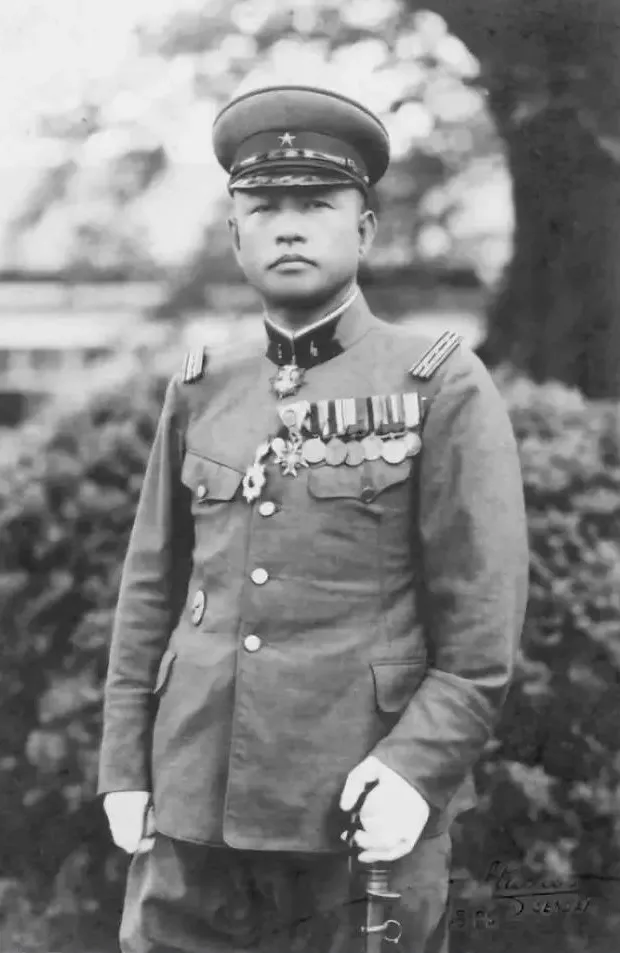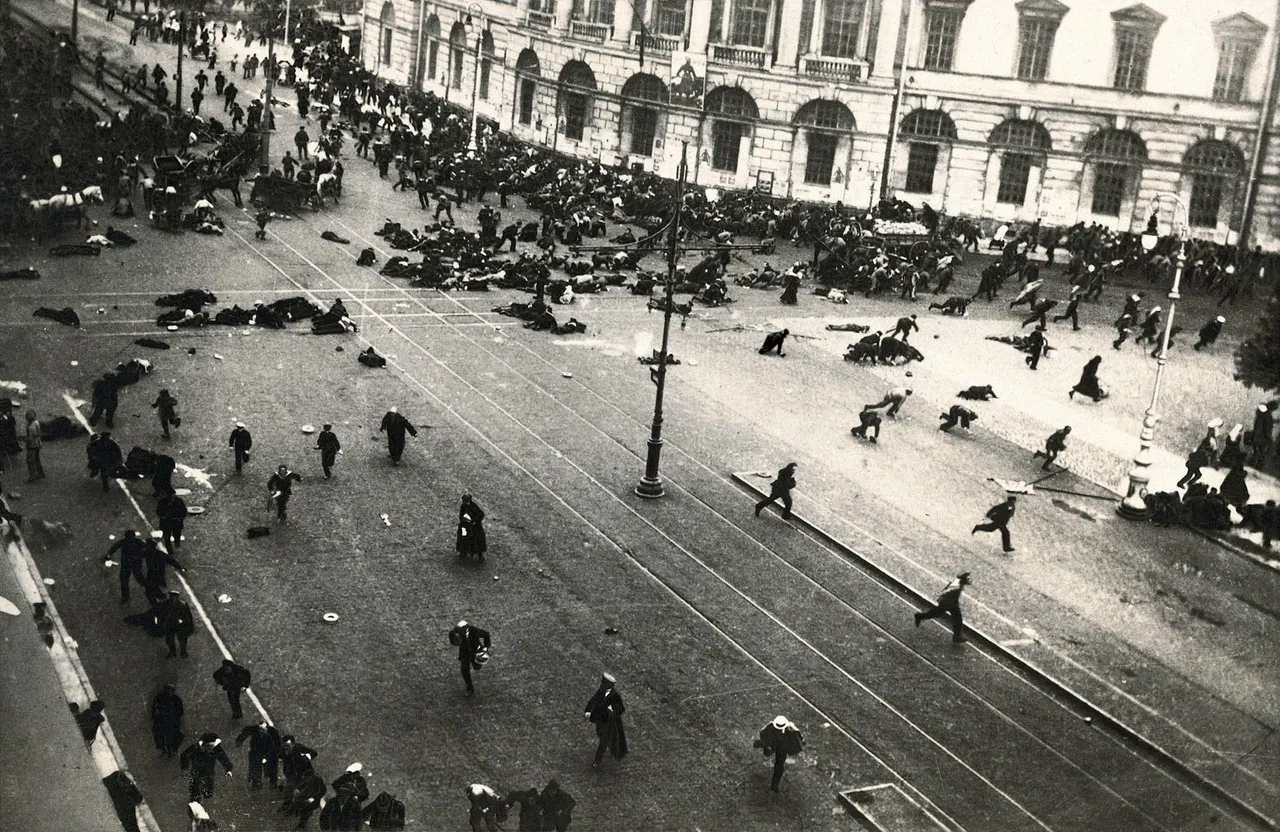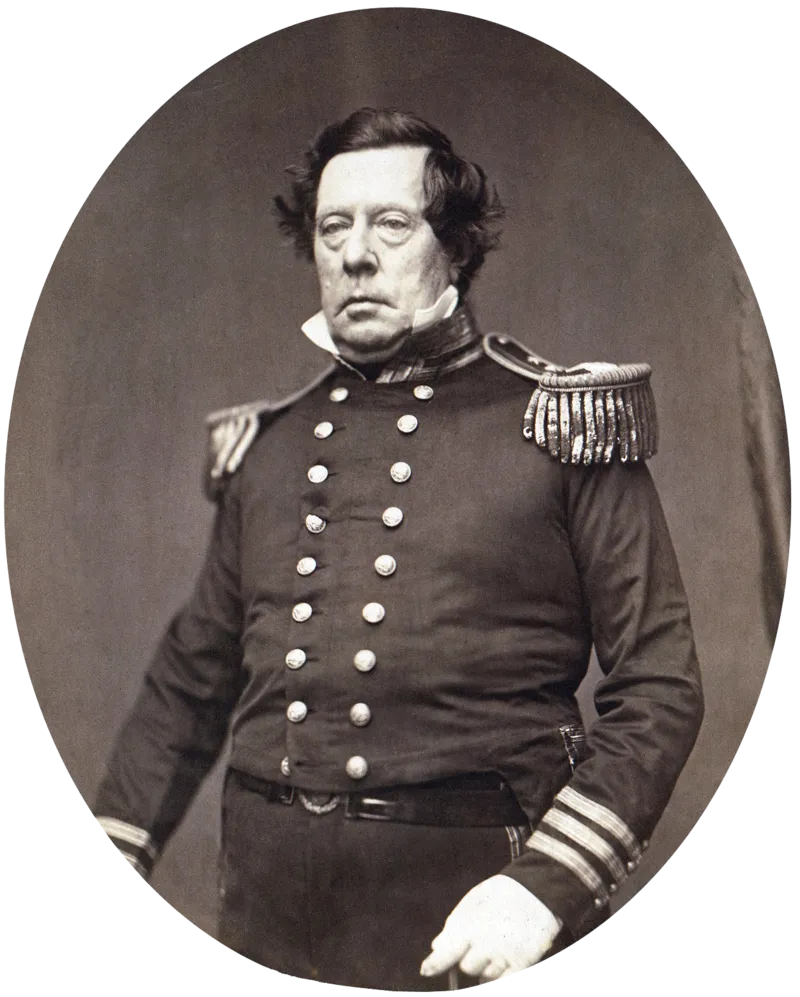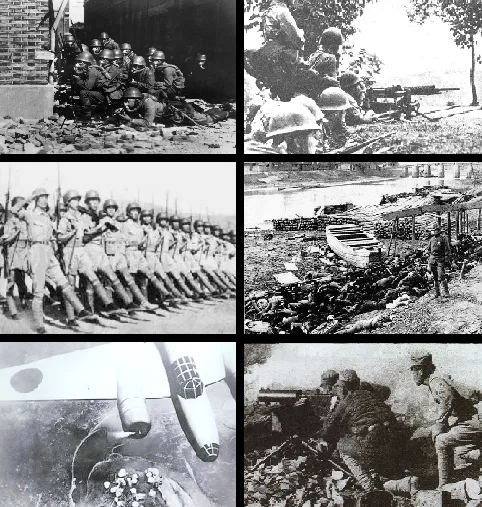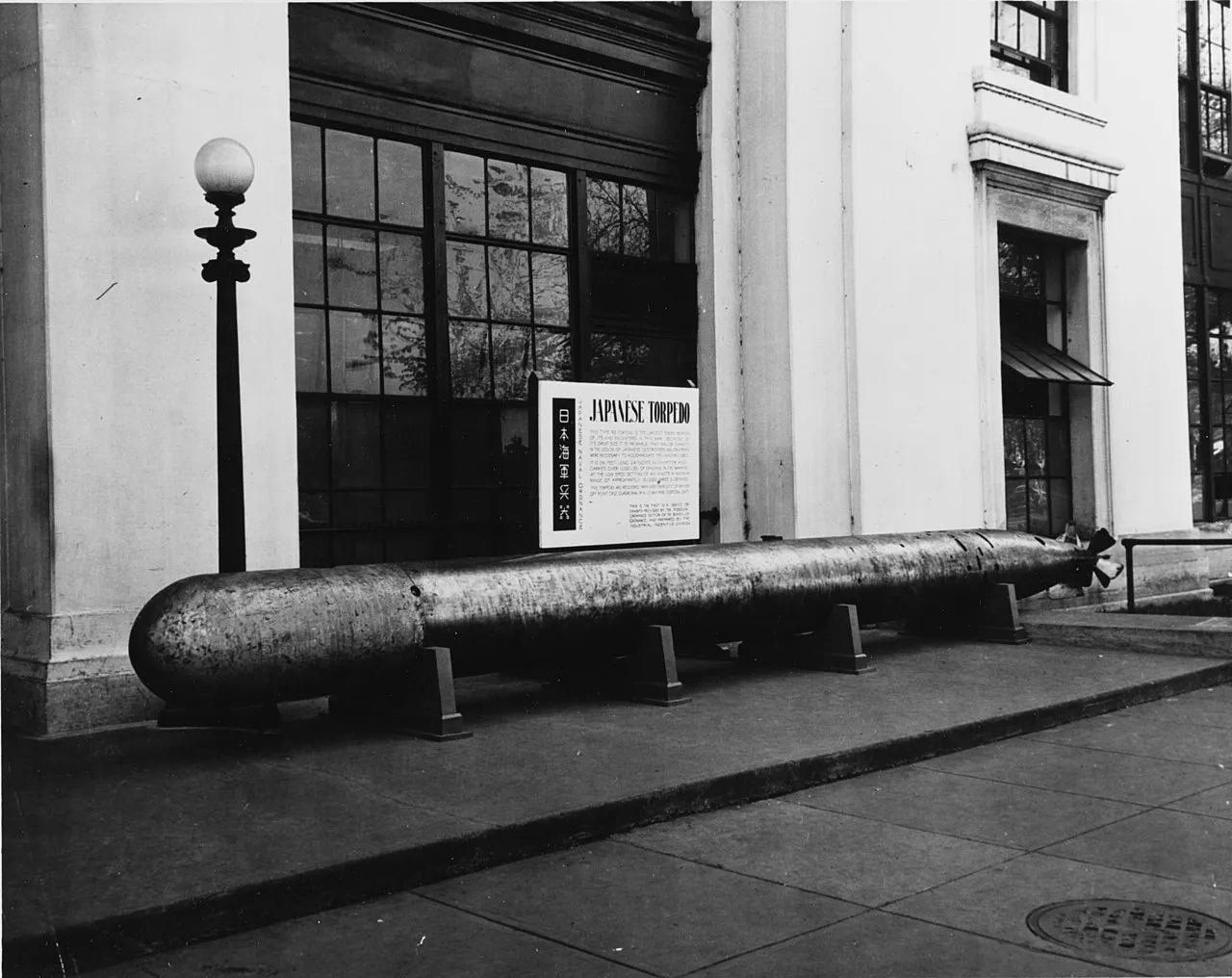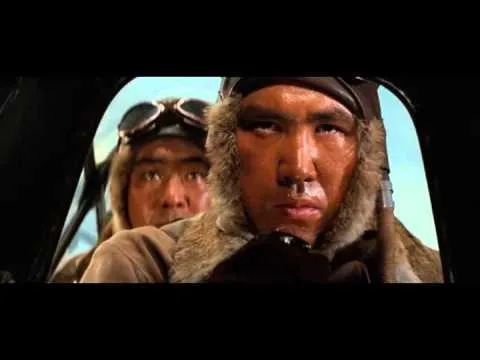What we can do is to recruit them into a better cult. We can offer them better social security to the cult they're in. We can offer them specific evils to battle that aren't their fellow citizens, but the psychopaths using our division to conquer us all. We cannot defeat their desperate need for belonging to a group that is strong enough to defeat the evils that are causing them fear, but we can show them that we aren't what they should fear, the people who are imposing the plandemic are.
Near the end of his interview Dr. Desmet points out that totalitarian tyrannies become much more violent when they defeat their opposition and silence dissent. He points out that in 1930 and 1935 Stalin began a purge that destroyed half the Communist Party, and the Nazis began their own pogrom. By this means such tyrannies destroy themselves.
We do not have to fear losing to our oppressors. We have to fear what will happen as they destroy themselves. We will prevail, but a key to avoiding the most terrible consequences of the derangement of our enemies is never falling silent, never being incapable of seeding doubt in their indoctrinated victims, because if we are completely censored and their ability to prosecute their derangement is unopposed, they will slaughter our people mercilessly.
Our greatest victory will not be our eventual victory over our psychopathic wannabe overlords, but in blunting their savagery. To do that we will have to remain engaged with their victims. We will have to be able to insert dissenting speech into platforms laser focused on censorship. We will have to prop the eyelids of our sleeping giant open, to keep a route to being awoken available.
I am always amazed by the wisdom and insight of Dear my friend @valued-customer. Currently, I have English conversational skills comparable to that of an American elementary school student, so it is difficult to understand his genius and great sentences and ideas.
However, since I am a reckless elementary school student in the US who refuses @roleob's kind advice, I will continue to challenge the impossible.😆
@roleob has often given me advice on serious problems and misunderstandings that my poor English conversational skills can bring.😅
I will always try to write works that will shock and surprise the King of Oregon and the King of the Rocky Mountains.
I thought maybe my respected senior @roleerob might see my behavior like this and call me a reckless kid.😁
Clockwise from the top: The road to Bapaume in the aftermath of the Battle of the Somme, 1916British Mark V tanks crossing the Hindenburg Line, 1918HMS Irresistible sinking after hitting a mine in the Dardanelles, 1915A British Vickers machine gun crew wearing gas masks during the Battle of the Somme, 1916German Albatros D.III biplane fighters near Douai, France, 1917World War I, often abbreviated as WWI or WW1, also known as the First World War or the Great War, was an international conflict that began on 28 July 1914 and ended on 11 November 1918. It involved much of Europe, as well as Russia, the United States and Turkey, and was also fought in the Middle East, Africa and parts of Asia. One of the deadliest conflicts in history, an estimated 9 million were killed in combat, while over 5 million civilians died from occupation, bombardment, hunger or disease.[4] The genocides perpetrated by the Ottomans and the 1918 Spanish flu pandemic spread by the movement of combatants during the war caused many millions of additional deaths worldwide.[5][6]
In 1914, the Great Powers were divided into two opposing alliances, the Triple Entente, consisting of France, Russia, and Britain, and the Triple Alliance, made up of Germany, Austria-Hungary, and Italy. Tensions in the Balkans came to a head on 28 June 1914 following the assassination of Archduke Franz Ferdinand, the Austro-Hungarian heir, by Gavrilo Princip, a Bosnian Serb. Austria-Hungary blamed Serbia and the interlocking alliances involved the Powers in a series of diplomatic exchanges known as the July Crisis. On 28 July, Austria-Hungary declared war on Serbia; Russia came to Serbia's defence and by 4 August, the conflict had expanded to include Germany, France and Britain, along with their respective colonial empires. In November, the Ottoman Empire, Germany and Austria formed the Central Powers, while in April 1915, Italy joined Britain, France, Russia and Serbia as the Allied Powers.
Facing a war on two fronts, German strategy in 1914 was to defeat France, then shift its forces to the East and knock out Russia, commonly known as the Schlieffen Plan.[7] This failed when their advance into France was halted at the Marne; by the end of 1914, the two sides faced each other along the Western Front, a continuous series of trench lines stretching from the Channel to Switzerland that changed little until 1917. By contrast, the Eastern Front was far more fluid, with Austria-Hungary and Russia gaining, then losing large swathes of territory. Other significant theatres included the Middle East, the Alpine Front and the Balkans, bringing Bulgaria, Romania and Greece into the war.
Shortages caused by the Allied naval blockade led Germany to initiate unrestricted submarine warfare in early 1917, bringing the previously neutral United States into the war on 6 April 1917. In Russia, the Bolsheviks seized power in the 1917 October Revolution and made peace in the March 1918 Treaty of Brest-Litovsk, freeing up large numbers of German troops. By transferring these to the Western Front, the German General Staff hoped to win a decisive victory before American reinforcements could impact the war, and launched the March 1918 German spring offensive. Despite initial success, it was soon halted by heavy casualties and ferocious defence; in August, the Allies launched the Hundred Days Offensive and although the German army continued to fight hard, it could no longer halt their advance.[8]
The Central Powers began to collapse; Bulgaria signed an Armistice on 29 September, followed by the Ottomans on 31 October, then Austria-Hungary on 3 November. Isolated, facing revolution at home and an army on the verge of mutiny, Kaiser Wilhelm abdicated on 9 November and the new German government signed the Armistice of 11 November 1918, bringing the fighting to a close. The 1919 Paris Peace Conference imposed various settlements on the defeated powers, the best known being the Treaty of Versailles. The dissolution of the Russian, German, Ottoman and Austro-Hungarian empires led to numerous uprisings and the creation of independent states, including Poland, Czechoslovakia and Yugoslavia. For reasons that are still debated, failure to manage the instability that resulted from this upheaval during the interwar period ended with the outbreak of World War II in 1939.
As World War I broke out in Europe, the Japanese were convinced that a new opportunity had arrived for them.
The Japanese were convinced that the fall of European empires had begun!
The Boxer Rebellion, the Boxer Uprising, the Boxer Insurrection, or the Yihetuan Movement was an anti-foreign, anti-colonial, and anti-Christian uprising in China between 1899 and 1901, towards the end of the Qing dynasty, by the Militia United in Righteousness (Yìhéquán), known as the Boxers in English because many of its members had practiced Chinese martial arts, which at the time were referred to as Chinese Boxing.
After the Sino-Japanese War of 1895 villagers in North China feared the expansion of foreign spheres of influence and resented the extension of privileges to Christian missionaries, who used them to support their followers. In 1898, Northern China experienced several natural disasters, including the Yellow River flooding and droughts. Boxers blamed these disasters on foreign and Christian influence. Beginning in 1899, Boxers spread violence across Shandong and the North China Plain, destroying foreign property, attacking or murdering Christian missionaries and Chinese Christians. The events came to a head in June, 1900, when Boxer fighters, convinced they were invulnerable to foreign weapons, converged on Beijing with the slogan "Support the Qing government and exterminate the foreigners." Diplomats, missionaries, soldiers and some Chinese Christians took refuge in the diplomatic Legation Quarter and were besieged for 55 days by the Imperial Army of China and the Boxers.
An Eight Nation Alliance of American, Austro-Hungarian, British, French, German, Italian, Japanese and Russian troops moved into China to lift the siege and rescue stranded civilians. The Empress Dowager Cixi, who had initially been hesitant, now supported the Boxers and on June 21, issued an Imperial Decree declaring war on the invading powers. Chinese officialdom was split between those supporting the Boxers and those favouring conciliation, led by Prince Qing. The supreme commander of the Chinese forces, the Manchu General Ronglu (Junglu), later claimed he acted to protect the foreigners. Officials in the southern provinces ignored the imperial order to fight against foreigners.
The Eight-Nation Alliance, after being initially turned back by the Imperial Chinese military and Boxer militia, brought 20,000 armed troops to China, defeated the Imperial Army in Tianjin, and arrived in Beijing on August 14, relieving the siege of the Legations. Plunder of the capital and the surrounding countryside ensued, along with summary execution of those suspected of being Boxers in retribution. The Boxer Protocol of September 7, 1901, provided for the execution of government officials who had supported the Boxers, provisions for foreign troops to be stationed in Beijing, and 450 million taels of silver—approximately $10 billion at 2018 silver prices and more than the government's annual tax revenue—to be paid as indemnity over the course of the next 39 years to the eight nations involved. The Qing dynasty's handling of the Boxer Rebellion further weakened their control over China, and led the dynasty to attempt major governmental reforms in the aftermath.
When The Boxer Rebellion broke out in China, European empires and Japan led by the Queen of Great Britain invaded China.
The Queen of Great Britain and her comrades began to divide and occupy China.
So, the Chinese called them robbers, pirates, drug dealers, arsonists, and rapists.😨
Mainland China fell into a semi-colonial state as it was divided and occupied by Europe and Japan. With the colonization of China, the world colonial rule of European empires was completed.
However, the Japanese have been watching closely the serious divisions and wars between European empires.
The rise of the United States, Russia, and Germany, starting to challenge the hegemony of the British Empire, which dominates the world's seas, drew a great deal of attention to the Japanese.
The Japanese came to predict that the confrontation between the British Empire and the United States, Russia, and Germany would eventually lead to World War. Especially in Europe, the confrontation between the British Empire and Russia and Germany was very serious.
Eventually, when World War I broke out in Europe, the Japanese rejoiced. This is because if European empires wage war and collapse together, Japan could occupy European Asian colonies.
Kanji Ishiwara (石原 莞爾, Ishiwara Kanji, 18 January 1889 – 15 August 1949)Kanji Ishiwara (石原 莞爾, Ishiwara Kanji, 18 January 1889 – 15 August 1949) was a general in the Imperial Japanese Army in World War II. He and Itagaki Seishirō were the men primarily responsible for the Mukden Incident that took place in Manchuria in 1931.
Kanji Ishiwara (石原 莞爾, Ishiwara Kanji, 18 January 1889 – 15 August 1949) studied Christian eschatology and soteriology, American and European history, and war history. Watching World War I, he predicted the collapse and end of European empires.
Ishiwara was born in Tsuruoka City, Yamagata Prefecture, into a samurai class family. His father was a police officer, but as his clan had supported the Tokugawa bakufu and then the Northern Alliance during the Boshin War of the Meiji Restoration, its members were shut out of higher government positions.
At 13, Ishiwara was enrolled in a military preparatory school. He was subsequently accepted at the 21st class of the Imperial Japanese Army Academy and graduated in 1909. He served in the IJA 65th Infantry Regiment in Korea after its annexation by Japan in 1910, and in 1915, he passed the exams for admittance to the 30th class of the Army Staff College. He graduated second in his class in 1918.[2]
Ishiwara spent several years in various staff assignments and then was selected to study in Germany as a military attaché. He stayed in Berlin and in Munich from 1922 to 1925, focusing on military history and military strategy. He hired several former officers from the German General Staff to tutor him, and by the time that he returned to Japan, he had formed a considerable background on military theory and doctrine.
Prior to leaving for Germany, Ishiwara had converted to Nichiren Buddhism. Nichiren had taught that a period of massive conflict would precede a golden era of human culture in which the truth of Buddhism would prevail. Japan would be the center and main promulgator of the faith, which would encompass the entire world. Ishiwara felt that the period of world conflict was fast approaching, and Japan, relying upon its vision of the kokutai and its sacred mission to "liberate" China, would lead a unified East Asia to defeat the West.[3]
Ishiwara was also the leader of a semi-religious and Pan-Asianist organization, the East-Asia League Movement (Tōarenmei undō).[4]
He was a follower of Nichiren Buddhism (Japanese: 日蓮仏教). He created a Japanese style of eschatology and soteriology by mixing the ideas of Nichiren Buddhism (Japanese: 日蓮仏教) with Christian eschatology and soteriology.
He predicted the collapse and end of European Christian civilization.
Crowd scattered by gunfire during the July Days in Petrograd, 17 July 1917The Russian Revolution was a period of political and social revolution that took place in the former Russian Empire which began during the First World War. This period saw Russia abolish its monarchy and adopt a socialist form of government following two successive revolutions and a bloody civil war. The Russian Revolution can also be seen as the precursor for the other European revolutions that occurred during or in the aftermath of WWI, such as the German Revolution of 1918.
The Russian Revolution was inaugurated with the February Revolution in 1917, this first revolt focused in and around the then-capital Petrograd (now Saint Petersburg). After major military losses during the war, the Russian Army had begun to mutiny. Army leaders and government officials were convinced that if Tsar Nicholas II abdicated the domestic unrest would subside. Nicholas agreed and stepped down, ushering in a new government lead by the Russian Duma (parliament)which became the Russian Provisional Government. This government was dominated by the interests of prominent capitalists, as well as the Russian nobility and aristocracy.
In response to this grassroots community assemblies (called Soviets) were formed. These Soviets were led by soldiers and urban industrial proletariats, as well as farmers. The Soviets initially permitted the new Provisional Government to rule however the Soviets did insist on a prerogative (privilege) in order to influence the government and to control various militias. Because of this, Russia was locked in a dual power as neither government trusted the other. The Provisional Government held state power such as military and international affairs whereas network of Soviets, took control of domestic affairs. Critically, the soviets held the allegiance of the working-class as well as the growing urban middle class.
During this chaotic period, there were frequent mutinies, protests and strikes. Many socialist and other leftist political organizations were engaged in daily struggle and vied for influence within the Duma and the Soviets. One of these factions were the Bolsheviks ("Ones of the Majority") led by Vladimir Lenin. Lenin campaigned on a slogan of peace, land, and bread which promised to cease war with Germany, give land to the peasantry, and end the famine caused by Russia's involvement in WWI. These slogans had a direct effect on the growing Bolshevik popularity.[1] Despite the virtual universal disdain towards the war effort, the Provisional Government chose to continue fighting anyway, giving the Bolsheviks and other socialist factions a justification to advance the revolution further. The Bolsheviks merged various workers' militias loyal to them into Red Guards, (later the Red Army), which would be capable of revolution.[2]
The volatile situation in Russia climaxed with the October Revolution, which was a Bolshevik armed insurrection by workers and soldiers in Petrograd that successfully overthrew the Provisional Government, transferring all its authority to the Bolsheviks. Under pressure from German military offensives, the Bolsheviks soon relocated the national capital to Moscow. The Bolsheviks had secured a strong base of support within the Soviets and, as the supreme governing party, established the Russian Soviet Federative Socialist Republic (RSFSR) which was dedicated to reorganizing the former empire into the world's first socialist state, to practice soviet democracy on a national and international scale. Their promise to end Russia's participation in the First World War was fulfilled when the Bolshevik leaders signed the Treaty of Brest-Litovsk with Germany in March 1918. To further secure the new state, the Bolsheviks established the Cheka, a secret police that functioned as a revolutionary security service to weed out, execute, or punish those considered to be "enemies of the people" in campaigns consciously modeled on those of the French Revolution.
Despite broad support in urban areas, the Bolsheviks had many enemies that refused to recognize their government. As a result a bloody civil war erupted among the "Reds" (Bolsheviks), the "Whites" (counter-revolutionaries), the independence movements, monarchists, and other socialist factions opposed to the Bolsheviks. It continued for several years, during which the Bolsheviks defeated both the Whites and all rival socialists. Victorious, they reconstituted themselves as the Communist Party. In the aftermath of the civil war, the RSFSR established Soviet power in the newly independent republics of Armenia, Azerbaijan, Belarus, Georgia and Ukraine. The RSFSR undertook an effort to unify these nations under one flag and thus created the Union of Soviet Socialist Republics (USSR) in 1922. While many notable historical events occurred in Moscow and Petrograd, there were also major changes in cities throughout the state, and among national minorities throughout the empire and in the rural areas, where peasants took over and redistributed land.
Did the birth of the Soviet Union lead to the downfall of European empires?
He understood The Russian Revolution as an event that heralded the collapse and destruction of European Christian civilization.
Kanji Ishiwara (石原 莞爾, Ishiwara Kanji, 18 January 1889 – 15 August 1949) argued that World War I was caused by fallen Christians in Europe, resulting in an atheistic Soviet Union.
World War I broke out in Europe because of the savages and crimes that European empires had committed all over the world.
The rise of the atheist Soviet Union will create new fears and hostility in the fallen Christian empires of Europe. So, European empires and the Soviet Union will start a new war, and eventually European Christian civilization will collapse.
If that happens, Japan will be the savior in liberating the Asian colonies of European Christian empires.



Kanji Ishiwara (石原 莞爾, Ishiwara Kanji, 18 January 1889 – 15 August 1949) prophesied that Japan would become a great savior, liberating all of the Asian colonies of European Christian empires.
However, before that, he shouted that he has the strongest enemy that must be defeated.
Japan's greatest enemy was the vast Christian empire inhabited by the King of Oregon, the King of the Rocky Mountains, and the handsome Monkey King.
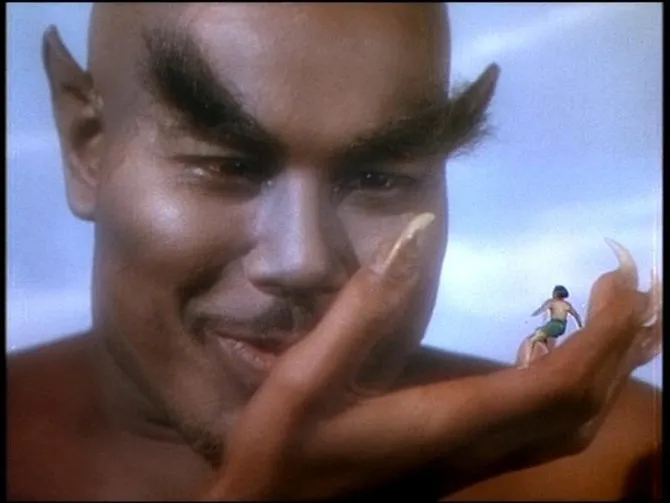

Ah, My genie of lamp @patriamreminisci is not a king, so I posted a picture of him separately.😄
Commodore Matthew PerryThe Perry Expedition (Japanese: 黒船来航, kurofune raikō, "Arrival of the Black Ships") was a diplomatic and military expedition to the Tokugawa Shogunate, involving two separate voyages by warships of the United States Navy, which took place during 1853–54. The goals of this expedition included exploration, surveying, and the establishment of diplomatic relations and negotiation of trade agreements with various nations of the region; opening contact with the government of Japan was considered a top priority of the expedition, and was one of the key reasons for its inception.
The expedition was commanded by Commodore Matthew Calbraith Perry, under orders from President Millard Fillmore. Perry’s primary goal was to force an end to Japan’s 220-year-old policy of isolation and to open Japanese ports to American trade, through the use of gunboat diplomacy if necessary. The Perry Expedition led directly to the establishment of diplomatic relations between Japan and the western Great Powers, and eventually to the collapse of the ruling Tokugawa shogunate and the restoration of the Emperor. Following the expedition, Japan's burgeoning trade routes with the world led to the cultural trend of Japonisme, in which aspects of Japanese culture influenced art in Europe and America.
America was a giant that inflicted eternal humiliation and fear on the Japanese people.
The Japanese were terrified and furious when they saw the American fleet that appeared in Japan in 1853, and they were succumbed to the Americans.
The Japanese built the Japanese Empire out of fear that the United States would one day conquer Japan.
So, the Japanese were convinced that in the future they must wage war with the United States and win.
However, compared to the United States, which dominates the entire New World, Japan was only an island nation with a very small territory, population, and resources.
The Japanese were convinced that Japan must conquer mainland China if it was to surpass the United States.
The Second Sino-Japanese War (1937–1945) was a military conflict that was primarily waged between the Republic of China and the Empire of Japan. The war made up the Chinese theater of the wider Pacific Theater of the Second World War. The beginning of the war is conventionally dated to the Marco Polo Bridge Incident on 7 July 1937, when a dispute between Japanese and Chinese troops in Peking escalated into a full-scale invasion. This full-scale war between the Chinese and the Empire of Japan is often regarded as the beginning of World War II in Asia.
China fought Japan with aid from the Soviet Union and the United States. After the Japanese attacks on Malaya and Pearl Harbor in 1941, the war merged with other conflicts which are generally categorized under those conflicts of World War II as a major sector known as the China Burma India Theater. Some scholars consider the European War and the Pacific War to be entirely separate, albeit concurrent, wars. Other scholars consider the start of the full-scale Second Sino-Japanese War in 1937 to have been the beginning of World War II. The Second Sino-Japanese War was the largest Asian war in the 20th century.[27] It accounted for the majority of civilian and military casualties in the Pacific War, with between 10 and 25 million Chinese civilians and over 4 million Chinese and Japanese military personnel missing or dying from war-related violence, famine, and other causes.[citation needed] The war has been called "the Asian holocaust."[28][29][30]
The war was the result of a decades-long Japanese imperialist policy to expand its influence politically and militarily in order to secure access to raw material reserves, food, and labor. The period after World War I brought about increasing stress on the Japanese policy. Leftists sought universal suffrage and greater rights for workers.[citation needed]1 Increasing textile production from Chinese mills was adversely affecting Japanese production and the Great Depression brought about a large slowdown in exports. All of this contributed to militant nationalism, culminating in the rise to power of a militarist faction. This faction was led at its height by the Hideki Tojo cabinet of the Imperial Rule Assistance Association under edict from Emperor Hirohito. In 1931, the Mukden Incident helped spark the Japanese invasion of Manchuria. The Chinese were defeated and Japan created a new puppet state, Manchukuo; many historians cite 1931 as the beginning of the war.[31][32] This view has been adopted by the PRC government. From 1931 to 1937, China and Japan continued to skirmish in small, localized engagements, so-called "incidents".
Following the Marco Polo Bridge Incident, the Japanese scored major victories, capturing Beijing, Shanghai and the Chinese capital of Nanjing in 1937, which resulted in the Rape of Nanjing. After failing to stop the Japanese in the Battle of Wuhan, the Chinese central government was relocated to Chongqing (Chungking) in the Chinese interior. Following the Sino-Soviet Treaty of 1937, strong material support helped the Nationalist Army of China and the Chinese Air Force continue to exert strong resistance against the Japanese offensive. By 1939, after Chinese victories in Changsha and Guangxi, and with Japan's lines of communications stretched deep into the Chinese interior, the war reached a stalemate. While the Japanese were also unable to defeat the Chinese communist forces in Shaanxi, who waged a campaign of sabotage and guerrilla warfare against the invaders, they ultimately succeeded in the year-long Battle of South Guangxi to occupy Nanning, which cut off the last sea access to the wartime capital of Chongqing. While Japan ruled the large cities, they lacked sufficient manpower to control China's vast countryside. In November 1939, Chinese nationalist forces launched a large scale winter offensive, while in August 1940, Chinese communist forces launched a counteroffensive in central China. The United States supported China through a series of increasing boycotts against Japan, culminating with cutting off steel and petrol exports into Japan by June 1941. Additionally, American mercenaries such as the Flying Tigers provided extra support to China directly.
In December 1941, Japan launched a surprise attack on Pearl Harbor, and declared war on the United States. The United States declared war in turn and increased its flow of aid to China – with the Lend-Lease act, the United States gave China a total of $1.6 billion ($18.4 billion adjusted for inflation).[33] With Burma cut off it airlifted material over the Himalayas. In 1944, Japan launched Operation Ichi-Go, the invasion of Henan and Changsha. However, this failed to bring about the surrender of Chinese forces. In 1945, the Chinese Expeditionary Force resumed its advance in Burma and completed the Ledo Road linking India to China. At the same time, China launched large counteroffensives in South China and retook West Hunan and Guangxi. Japan formally surrendered on 2 September 1945. China regained all territories lost to Japan.
So, Japan invaded mainland China, opening the prelude to World War II.
Since Japan studied and imported Western weapons, strategies, and tactics to conquer China from 100 years ago, the Japanese military was strong.
So, the Chinese fell helplessly to the Japanese aggression.
However, the Japanese were not confident that they would win the war against the United States in the future.

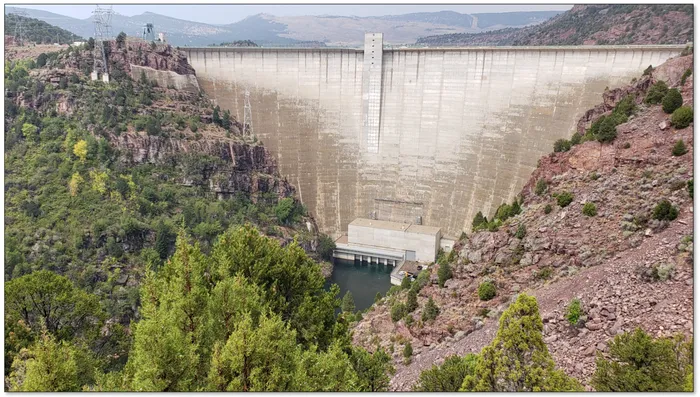
As I have always feared the genius of the King of Oregon and the insight of the King of the Rockies, the Japanese feared America's infinite power.😅
I have always been overwhelmed by the amount of resources and food produced in the vast expanse of North America.😲
So, the Japanese have long studied strategies and tactics to defeat the US Navy.
Type 93 torpedo, recovered from Point Cruz, Guadalcanal, on display outside U.S. Navy headquarters in Washington, D.C., during World WarThe Type 93 (酸素魚雷, designated for Imperial Japanese calendar year 2593) was a 610 mm (24 in)-diameter torpedo of the Imperial Japanese Navy (IJN), launched from surface ships. It is commonly referred to as the Long Lance[1] by most modern English-language naval historians, a nickname given to it after the war by Samuel Eliot Morison,[2] the chief historian of the U.S. Navy, who spent much of the war in the Pacific Theater. In Japanese references, the term Sanso gyorai (酸素魚雷, lit. "oxygen torpedo") is also used, in reference to its propulsion system.[3] It was the most advanced naval torpedo in the world at the time.[4][5]
After 10 years of research, the Japanese developed The Type 93 (酸素魚雷, designated for Imperial Japanese calendar year 2593).
History and development
The Type 93's development (in parallel with a submarine-launched model, the Type 95) began in Japan in 1928, under the auspices of Rear Admiral Kaneji Kishimoto and Captain Toshihide Asakuma. The torpedo design was inspired by the British oxygen-enriched torpedoes used on the Nelson-class battleships. At the time, the most powerful potential enemy of the Japanese Navy was the United States Navy's Pacific Fleet. The U.S. Navy's doctrine, presuming an invasion by Japan of the Philippines (an American commonwealth at that time), called for the battle line to fight its way across the Pacific Ocean, relieve or recapture the Philippines, and destroy the Japanese fleet. Since the IJN had fewer battleships than the U.S. Navy, it planned to use light forces (light cruisers, destroyers, and submarines) to whittle down the U.S. Navy's fleet in a succession of minor battles, mostly at night. After the number of American warships was sufficiently reduced, the IJN would commit its own presumably fresh and undamaged battleships to finish off the U.S. remnants in one huge climactic battle. (This was essentially what the U.S. Navy's "War Plan Orange" expected.)
The Japanese Navy invested heavily in developing a large, heavy, and long-range torpedo, the Type 93. Torpedoes were the only weapon that gave small warships, such as destroyers, the potential to cripple or sink battleships. The IJN's torpedo research and development focused on using highly compressed oxygen instead of compressed air as the fuel oxidizer in the torpedo's propulsion system. These torpedoes used an otherwise normal wet-heater engine burning a fuel such as methanol or ethanol. Since air is only 21% oxygen (and 78% nitrogen), pure oxygen provides nearly five times as much oxidizer in the same tank volume, thereby increasing torpedo range. In addition, the absence of the inert nitrogen resulted in the emission of significantly less exhaust gas, comprising only carbon dioxide, which is significantly soluble in water, and water vapor, thus greatly reducing tell-tale bubble trails.
Compressed oxygen is dangerous to handle and required lengthy research and development, not to mention additional training for the warship's torpedomen, for safe operational use. Eventually, the IJN's weapons development engineers found that by starting the torpedo's engine with compressed air, and then gradually switching to pure oxygen, they were able to overcome the problem of explosions that had hampered it before. To conceal the use of pure oxygen from the ship's crew and any potential enemy, the oxygen tank was named the secondary air tank. The pure oxygen torpedo was first deployed by the IJN in 1935.
Specification
Some specification examples of ranges by speed:
22,000 m (24,000 yd) at 89 to 93 km/h (48 to 50 kn)
33,000 m (36,000 yd) at 69 to 72 km/h (37 to 39 kn)
40,400 m (44,200 yd) at 61 to 65 km/h (33 to 35 kn)
However, the IJN announced officially the maximum performance of the Type 93 was 11 km (12,000 yd) at 78 km/h (42 kn).
The stated range of over 10 km (11,000 yd) was effective when the targeted warship steamed straight for more than a few minutes while the torpedo approached. This sometimes occurred when USN cruisers chased IJN destroyers breaking away from the scene of the battle at high speed during the night, or when American fleet carriers, engaged in flight operations, were targeted by IJN submarines in the South Pacific in 1942–43.
The Type 93 weighed about 2,700 kg (6,000 lb), with a high explosive warhead of about 490 kg (1,080 lb).
Rear Admiral Jungo Rai explained this weapon in the chapter "Torpedo", in collective work The Full Particulars of Secret Weapons(秘密兵器の全貌, first published by Koyo-sha, Japan, in 1952.
The Type 93 (酸素魚雷, designated for Imperial Japanese calendar year 2593) developed by Japan was proud of Japan because it had the longest range in the world.
The strategy was to destroy the American fleet by firing The Type 93 (酸素魚雷, designated for Imperial Japanese calendar year 2593) by the Japanese submarines outside the detection range of the American fleet if the American fleet were to advance into Japan.
The Type 93 (酸素魚雷, designated for Imperial Japanese calendar year 2593) has a range that has definitely surpassed that of American torpedoes, so even today, most Japanese proudly claim that it proves the superiority of Japanese science and technology.
So, I dared to declare that The Type 93 (酸素魚雷, designated for Imperial Japanese calendar year 2593) was a Japanese spear aimed at the King of Oregon and the King of the Rocky Mountains.😳
DF-41 missile on a road-mobile vehicleThe Dongfeng-41 (DF-41, CSS-20) (simplified Chinese: 东风-41; traditional Chinese: 東風-41; lit. 'East Wind-41') is a fourth-generation Chinese solid-fuelled road-mobile intercontinental ballistic missile operated by the People's Liberation Army Rocket Force (formerly the Second Artillery Corps). DF-41 is the fourth and the latest generation of the Dongfeng series strategic missiles developed by China.[4] The missile was officially unveiled at the China National Day military parade on 1 October 2019.
China boasted that it had developed The Dongfeng-41 (DF-41, CSS-20)(simplified Chinese: 东风-41; traditional Chinese: Eastern Wind-41; lit. 'East Wind-41') , an intercontinental ballistic missile capable of striking the North American continent freely from anywhere in the world.

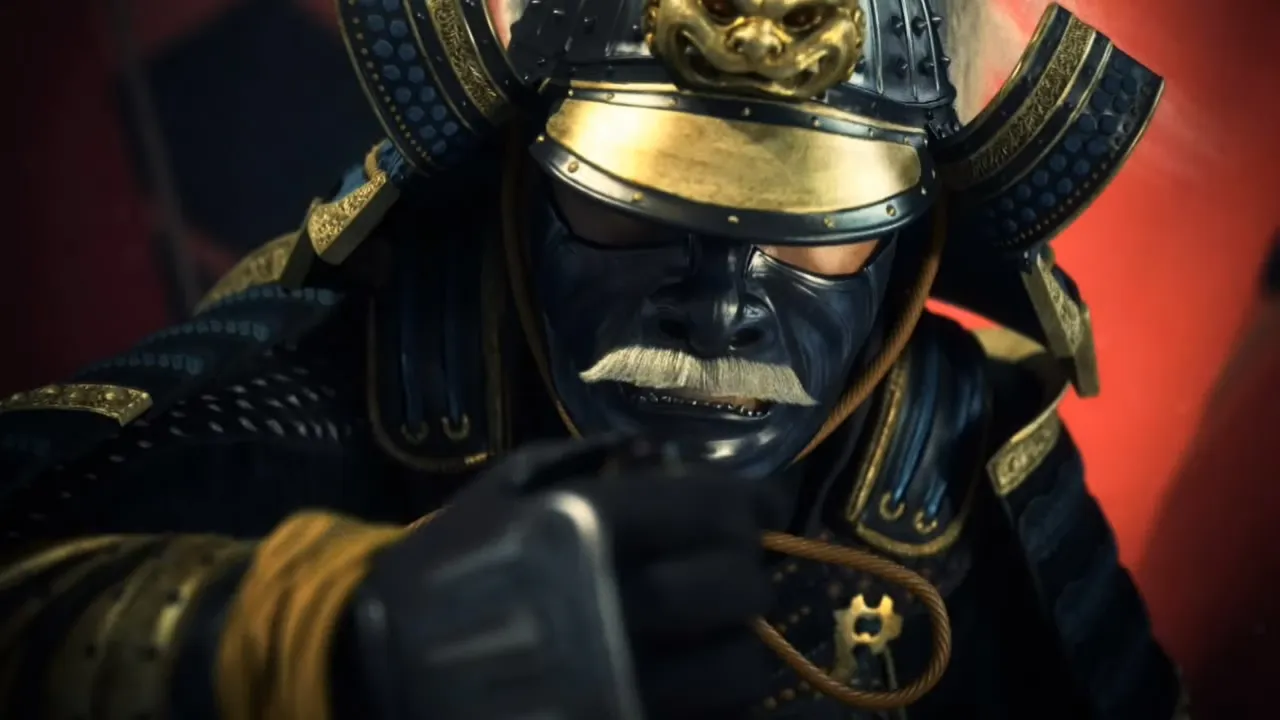
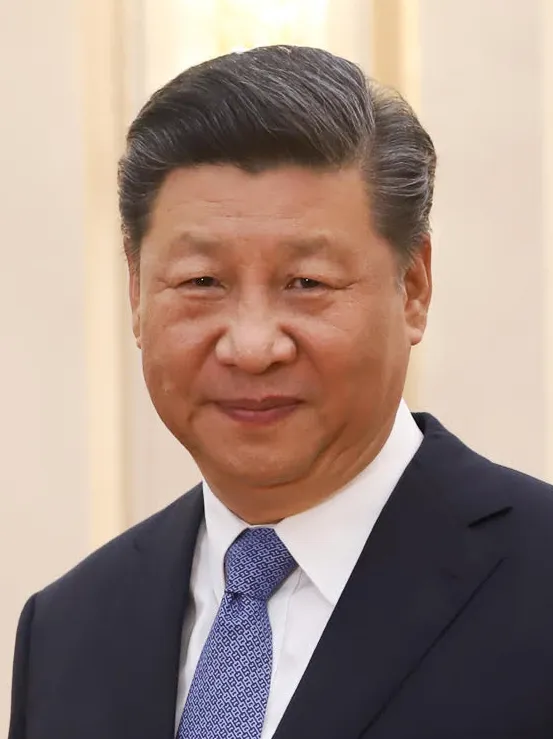
Please forgive my humble act of posting pictures of Your Majesty without Your Majesty's permission.🙏
